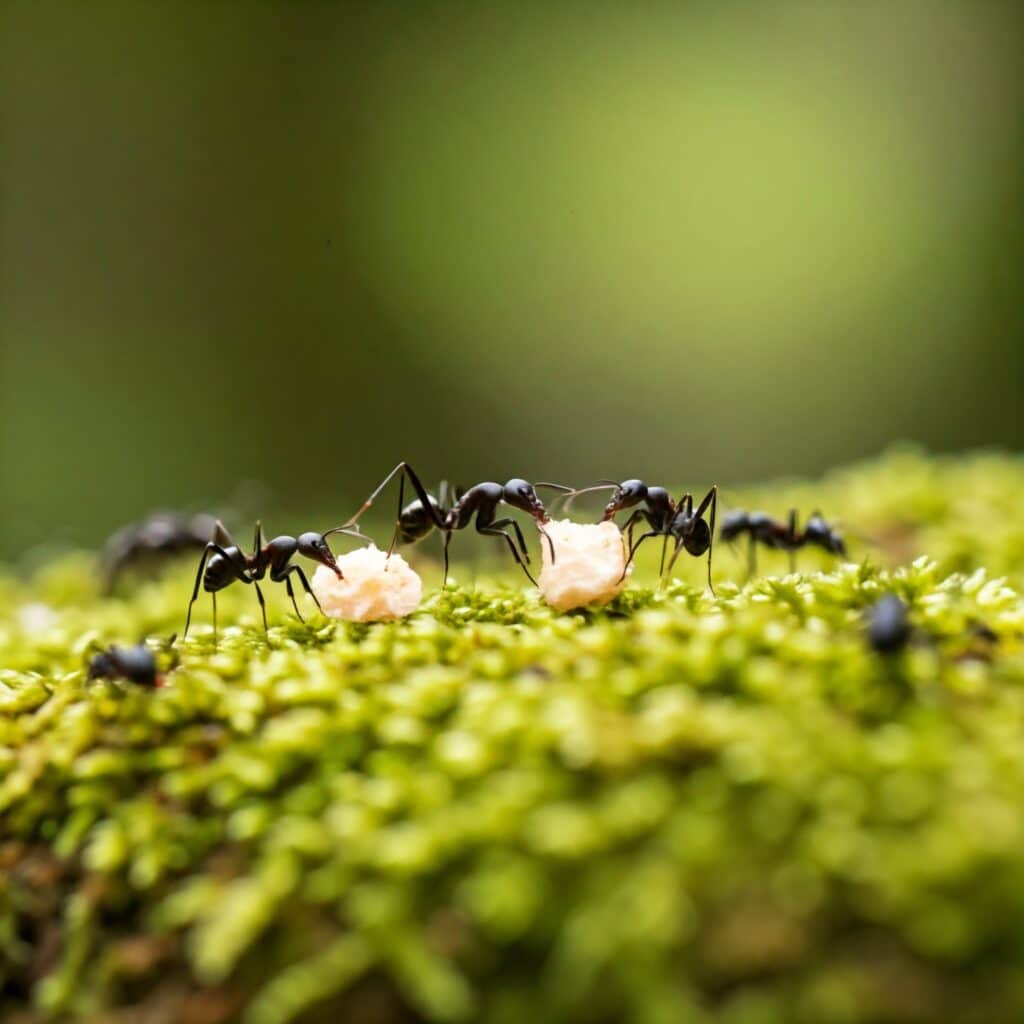Ants, those tiny, industrious insects, can quickly become unwanted houseguests. With their ability to form large colonies and their persistent foraging behavior, these pests can be a real challenge to control. Each ant species acts differently and a method that works for one may not work for another. Oftentimes, homeowners face challenges with getting these tiny terrors under control because many solutions only kill the work and don’t go back to the colony, allowing the colony to simply replace the lost workers.

Understanding Your Ant Enemy
Not all ants are created equal. Texas is home to numerous ant species, each with its own distinct behavior and level of nuisance. Ant infestations can be more than just a nuisance. They can cause significant damage to property, contaminate food, and pose health risks. Some ant species, like fire ants, can deliver painful stings that can cause allergic reactions in some individuals.
Ants of Texas
Texas is home to a wide variety of these pesky pests including:
- Fire ants: Aggressive behavior and painful stings. Everyone around the United States thinks of these as southern ants, but in fact they are imported and an invasive species. Fire ants are a major pest in many parts of Texas. They build large mounds and can invade homes in search of food and water.
- Odorous house ants: As the name implies, these small black ants emit a distinctive odor when crushed. Most often these ants are found indoors, particularly in kitchens and bathrooms.
- Carpenter ants: Large black ants that excavate tunnels in wood, causing structural damage to homes. Despite what most people think, these ants do not eat the wood they chew through. Instead they dig it out to make homes for their colony.
- Argentine ants: Small and light brown, argentine ants form supercolonies and can be extremely difficult to control due to their size. When trying to remove argentine ants, baiting is important to ensure that the poison reaches the colony.
- Pharaoh ants: These tiny yellow ants are often found in hospitals, restaurants, and homes. They are difficult to eradicate due to their rapid reproduction rate.
- Crazy ants: Tiny ants yellow in color are an invasive species to the US and with huge numbers in their colony they can be overwhelming. So overwhelming that across the south, we can see crazy ants taking territory from fire ants even. Drawn to electronics, you can often find these ants hiding in electrical components.
DIY Ant Control: A Daunting Task
While there are over-the-counter ant control products available, eliminating an ant infestation can be challenging. The most common issue is that the ant products sold at the big box stores are only effective on the worker ants and the poison never makes it back to the colony. This results in reduced population, but that is only temporary before the ants return. Some DIY methods that may improve ant infestations include:
- Sanitation: Keep food and garbage areas clean and free of crumbs.
- Seal entry points: Seal cracks and crevices around windows, doors, and foundations to prevent ant entry.
- Bait stations: Ant baits can be effective in reducing populations. However, it may take several weeks to see results.
- Diatomaceous earth: This natural powder can kill ants by dehydrating them.
- Borax: A common household cleaning product, borax can be used as a DIY ant control, but it should be used with caution.
When it’s Time to Call Prickly Pear
If DIY methods fail or the ant infestation is out of your control, it’s time to call in a professional pest control service like Prickly Pear. Our experts have the knowledge, experience, and tools to effectively eliminate ants and prevent future infestations.
Professional pest control services typically employ a combination of methods, including:
- Inspection: A thorough inspection to identify the type of ant, the extent of the infestation, and potential entry points.
- Baiting: Using specialized baits to target the ant colony.
- Spraying: Applying insecticides to kill ants on contact and create a barrier.
- Liquid feed baits: These baits are specifically designed to target ant colonies and can be very effective.
A Note about the Fiery Foe… Fire Ants
Fire ants are particularly aggressive and despite what you may think, they do not bite, rather they inflict painful stings. Their mounds contain up to 200,000 ants and can damage lawns and gardens. Fire ants tunnel underground for up to 25 feet before emerging to forage for food. Most colonies exist for weeks before they become large enough for us to notice. Fire ant stings contain a toxin that can cause allergic reactions so if you find yourself battling a large colony, it is best to reach out for help. It’s essential to take precautions to avoid stings and to seek professional help for removal.
Prevention is Key: Keeping Ants at Bay
Preventing ant infestations requires a combination of sanitation, exclusion, and ongoing monitoring. By following these tips, you can reduce the likelihood of an ant invasion:
- Regular cleaning: Keep kitchen and food areas clean and free of crumbs.
- Proper food storage: Store food in airtight containers.
- Garbage disposal: Take out the trash regularly and seal garbage cans tightly.
- Moisture control: Fix leaks and reduce humidity in your home.
- Yard maintenance: Trim bushes and trees away from the house to eliminate hiding places.
By understanding the different types of ants, their behaviors, and the potential risks they pose, you can take steps to protect your home and family from these persistent pests and if you feel overwhelmed, reach out, Prickly Pear is here to help. ur experts can safely and humanely stop woodpeckers from damaging your home and property.
